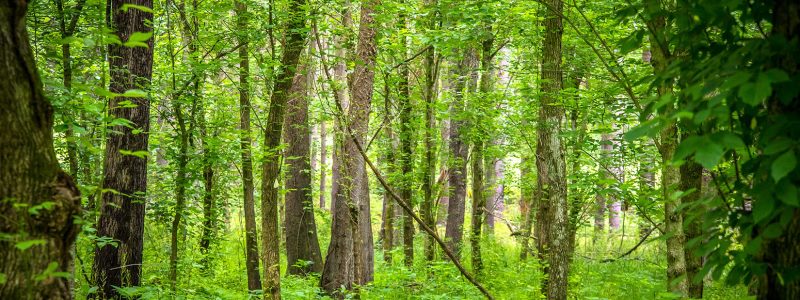Misconceptions about the practice of forestry persist across Maryland. “Forestry” is often equated with “cutting down trees, usually to the detriment of the environment.” This guidance document strives to provide an introduction to the many facets of the forestry industry—from forest management and tree plantings to harvest plans, the processing of wood, and the creation of wood products. The forestry community includes landowners, harvesters, sawmill operators, cottage industry furniture makers, and others.

Most forest land in Maryland is owned by private landowners, with 72% owned by farmers, families, small timber investors, and recreational landowners. State forests, parks, or wildlife management areas account for 25% of forested land, and 3% is owned by the federal government. Many would like to generate an income from their forests without developing them, and local planning and zoning offices play a vital role in local forestry. State law recognizes this fact: “Since it is in the State and public interests to preserve the forest land base and other natural resources, a local government with planning and zoning powers shall support forestry by a reasonable exercise of these powers, including the consideration, development, and interpretation of planning and zoning requirements that beneficially impact the efficient and economic practice of forestry in a manner consistent with the local government’s implementation of the [13 state planning] visions listed in §1-201 of the Land Use Article.” (Annotated Code of Maryland, Natural Resources Article, § 5-102.1(e))
This document has two main goals:
- Help local officials to become familiar with the many facets of forestry and the Maryland state laws and regulations that govern it.
- Provide examples of how local planning and zoning can accommodate the different aspects of forestry, thereby making local officials more familiar with forestry practices in their jurisdictions thus streamlining the permitting process.
The guidance also provides many definitions of forestry-related terms that will help local officials to better understand the many aspects of forestry.
Note that this is different than the Technical Study on Changes in Forest Cover and Tree Canopy in Maryland, required by the Tree Solutions Now Act of 2021, and to be completed by the Harry R. Hughes Center for Agro-Ecology, for the purpose of reviewing changes in forest cover and tree canopy in Maryland. See pages 22-24 of the following law.
Why Is the Maryland Department of Planning (Planning) Publishing a Document about Forestry?
The Maryland Department of Natural Resources Forest Service contributed substantially to the forestry guidance document. They asked Planning to take the lead because the primary audience is local planning and zoning officials and staff. In addition, Planning is the best contact for addressing questions and concerns about adapting the guidance to local plans and zoning codes.
Read the guidance here.